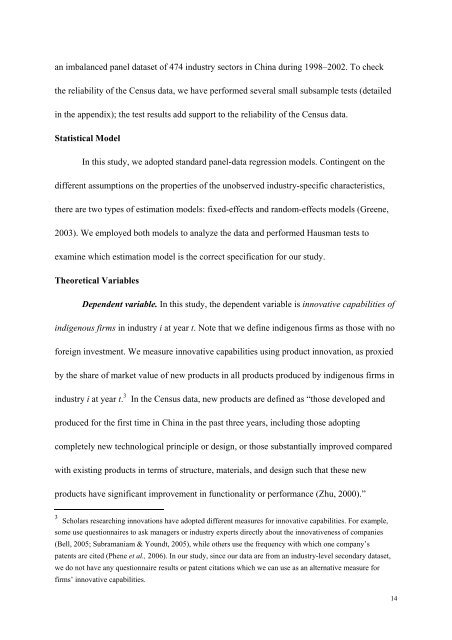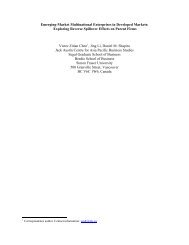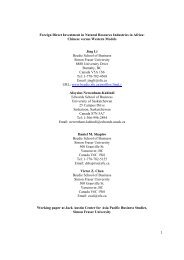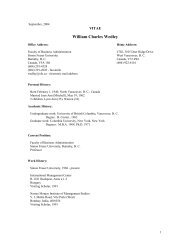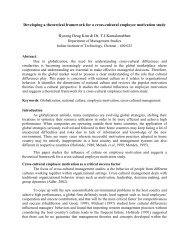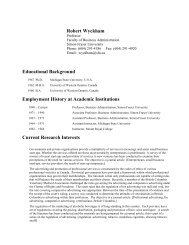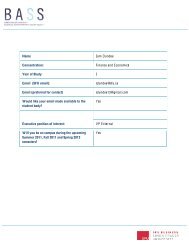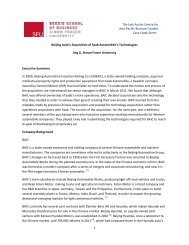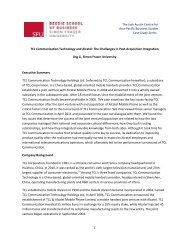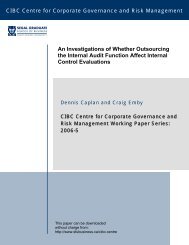Here - Beedie School of Business - Simon Fraser University
Here - Beedie School of Business - Simon Fraser University
Here - Beedie School of Business - Simon Fraser University
You also want an ePaper? Increase the reach of your titles
YUMPU automatically turns print PDFs into web optimized ePapers that Google loves.
an imbalanced panel dataset <strong>of</strong> 474 industry sectors in China during 1998–2002. To check<br />
the reliability <strong>of</strong> the Census data, we have performed several small subsample tests (detailed<br />
in the appendix); the test results add support to the reliability <strong>of</strong> the Census data.<br />
Statistical Model<br />
In this study, we adopted standard panel-data regression models. Contingent on the<br />
different assumptions on the properties <strong>of</strong> the unobserved industry-specific characteristics,<br />
there are two types <strong>of</strong> estimation models: fixed-effects and random-effects models (Greene,<br />
2003). We employed both models to analyze the data and performed Hausman tests to<br />
examine which estimation model is the correct specification for our study.<br />
Theoretical Variables<br />
Dependent variable. In this study, the dependent variable is innovative capabilities <strong>of</strong><br />
indigenous firms in industry i at year t. Note that we define indigenous firms as those with no<br />
foreign investment. We measure innovative capabilities using product innovation, as proxied<br />
by the share <strong>of</strong> market value <strong>of</strong> new products in all products produced by indigenous firms in<br />
industry i at year t. 3 In the Census data, new products are defined as “those developed and<br />
produced for the first time in China in the past three years, including those adopting<br />
completely new technological principle or design, or those substantially improved compared<br />
with existing products in terms <strong>of</strong> structure, materials, and design such that these new<br />
products have significant improvement in functionality or performance (Zhu, 2000).”<br />
3<br />
Scholars researching innovations have adopted different measures for innovative capabilities. For example,<br />
some use questionnaires to ask managers or industry experts directly about the innovativeness <strong>of</strong> companies<br />
(Bell, 2005; Subramaniam & Youndt, 2005), while others use the frequency with which one company’s<br />
patents are cited (Phene et al., 2006). In our study, since our data are from an industry-level secondary dataset,<br />
we do not have any questionnaire results or patent citations which we can use as an alternative measure for<br />
firms’ innovative capabilities.<br />
14


